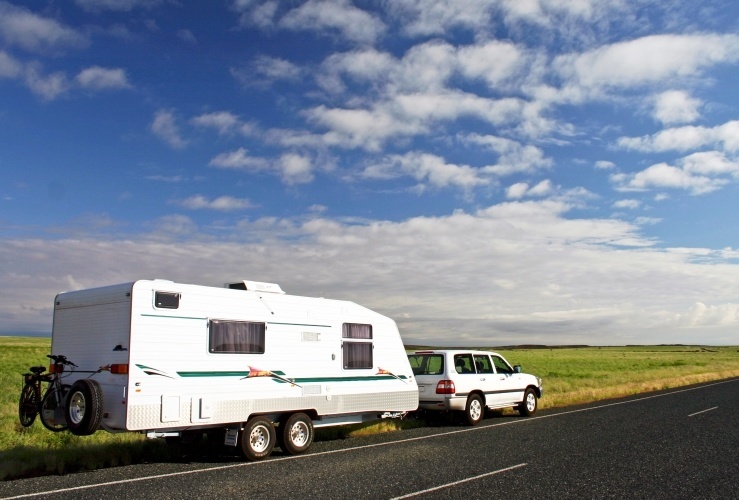For many Brits, booking a staycation in a caravan is one of the top choices for a holiday. However, before they can go ahead with this then they need to ensure they know how to tow the caravan safely.
Similarly, they may need this knowledge if, for example, they are moving house and need to tow a trailer full of stuff.
Whether, and for whatever reason, you need to tow a caravan or trailer. You need to know about the safety aspects of this. There are a number of basic principles that you should be able to understand to make this work.

Towing Weights
The general rule is that the weight of a loaded caravan or trailer should not be more than 85 per cent of a car's Kerb Weight.
Therefore, consider the amount of stuff that you are taking with you and how much it all weighs together. You must not overload your car or your caravan or trailer when towing and you must ensure that the latter falls within your car's towing ability. Altogether, make sure the combined weight of your car and loaded caravan or trailer are within the maximum 'train' weight of your car.
If you are unsure about how much your caravan weighs, take it to your nearest weighbridge or weigh all the items going in it separately and then add it together. This is the caravan's 'Mass in Running Order'.
It is very easy to overload your car, trailer or caravan. Make sure you keep your caravan or trailer as light as possible and load the heavier items lower down and close to its axle.
Outfit Matching
You should make sure that your car and caravan or trailer are a good match. To help you with this, specialist groups such as the Camping and Caravanning Club and the Caravan Club can provide you with technical information to help you choose a caravan that will go safely with your car or vice versa.
When you choose to change your car or caravan, be sure to check this again so that you end up with a safe combination.
Legal rules
The type of driving licence you have will dictate the kinds of caravans and trailers you are legally allowed to tow.
Therefore, if you passed your test after January 1st 1997 then you can only drive a category B vehicle, one that has a maximum permissible weight of up to 3,500 kg and has eight passenger seats including the driver at most. This can only then be used alongside a caravan or trailer with a maximum authorised mass of 750 kg. Alternatively, you can have a caravan weighing more than this if the combined weight of the car and caravan is less than 3,500 kg in gross train weight. What's more, the maximum authorised mass of the caravan must be less than the unladen weight of the car.
For those who passed their test before January 1st 1997, the rules were different, so you are entitled to drive a vehicle and trailer combination with a maximum authorised mass of 8.25 tonnes.
Tow Brackets
You need to have tow brackets fitted to pull a caravan or trailer and these must be tested to the British or European standard that is appropriate. What's more, the mounting points need to have been recommended by the vehicle's manufacturer.
For cars that have been registered since August 1st 1998, they can only be fitted with a bracket that is type approved tested to European Directive 94/20/EC. Look out for a label, plate or stamp that details the type approval number and vehicle for which this fitment is approved.
However, be aware that some vehicles are not rated for towing and cannot have a tow bar fitted. Therefore, you need to contact the vehicle manufacturer is you are unsure if your vehicle is suitable for towing.
When getting a tow bracket fitted, make sure you get a business that has been approved under the National Trailer and Towing Association's Quality Assured scheme to do it.




